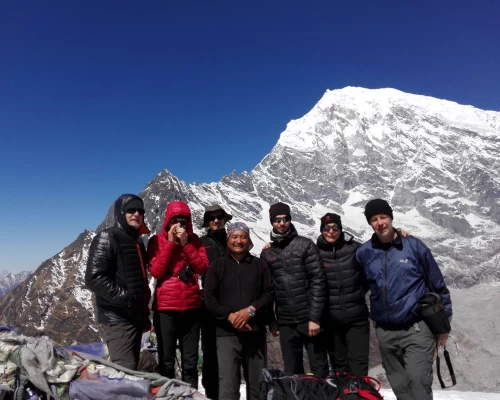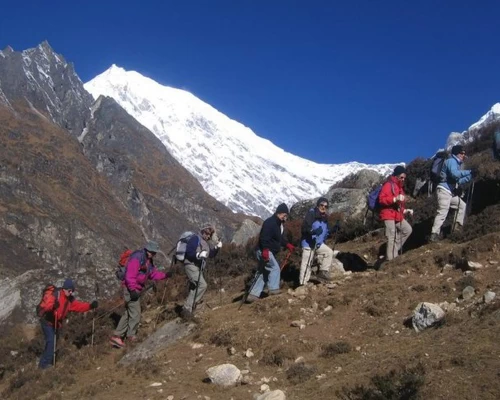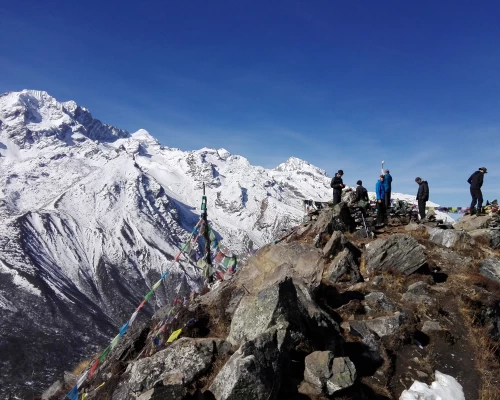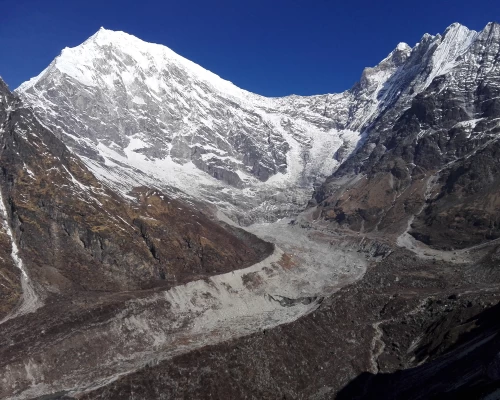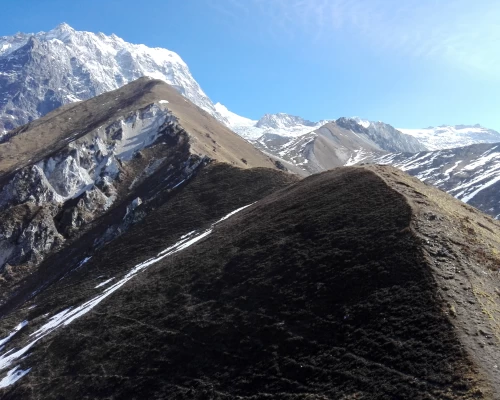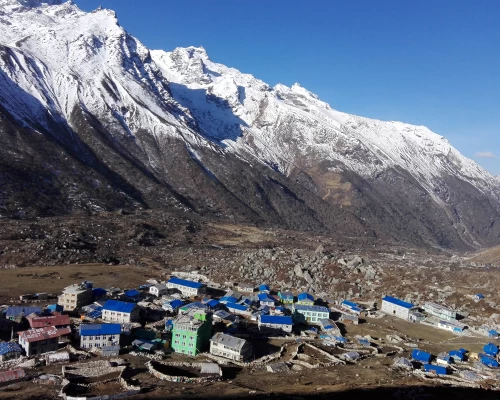Trekking into the Langtang
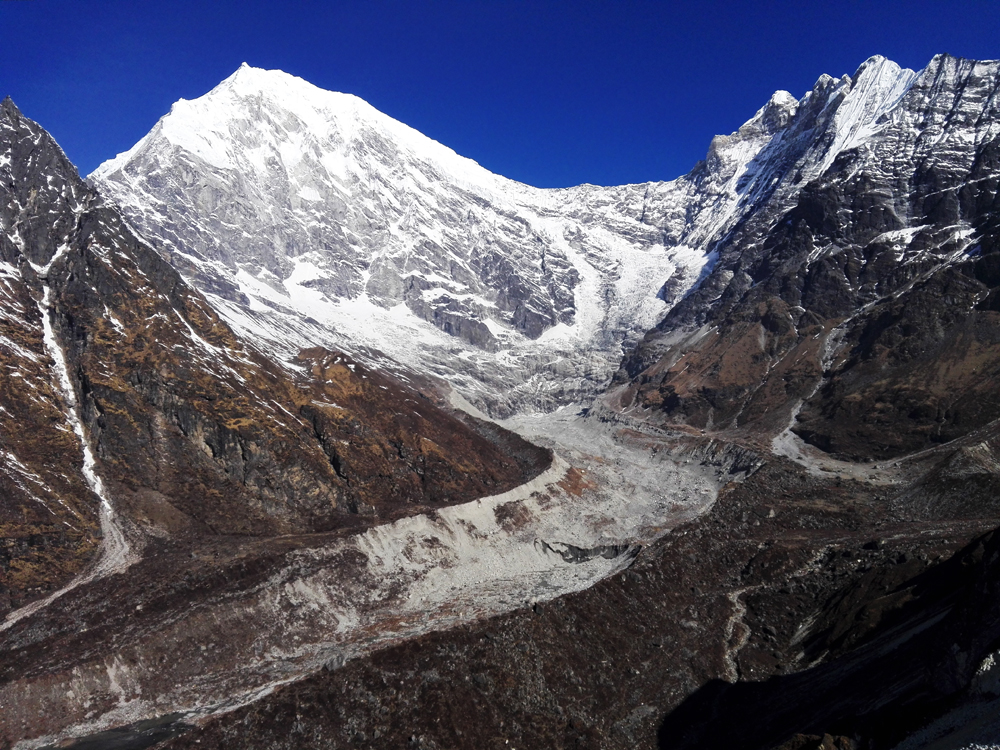
Trekking into the Langtang valley is one of the most beautiful travel destinations northwest of Kathmandu. This valley was badly destroyed by the heavy earthquake in 2015 across the Himalayas. In Langtang Valley, trekkers experience the majestic Himalayas Langtang Lirung (7246m), Dhakpache, Yala Peak, Langsisa Ri, Urkin Mang ri, Gangchhembu (6388m) Naya Khang (5846m) and Dorje Lakpa(6966m), etc. The trail crosses through different villages, alpine forests, and terraced farmlands through rocky and sloppy pastoral hills.
Trekkers have to take a daylong overland drive from Kathmandu towards the Trisuli River bank, Bedrawati, Dhunche, and Shyabrubesi. The road condition is much more improved however it is still bumpy or off-road drive. Langtang is glacier glacier-formed valley with spectacular alpine contour geography, Mountains, vegetation, wildlife, and enormous glaciers. This trek is also very decorated with different ethnic and cultural traditions. The Buddhist tradition is the dominant practice around Langtang Valley. Their language, way of life, customs everything is influenced by Tibetans. Langtang area is under the protection of Langtang National Park; it is very famous for its varieties of Flora and fauna and endangers lives. Among the endangered animals, Langtang National Park is known as the homeland of the red panda. Every year, thousands of vegetation researchers visit this area because it has a variety of plants. It is also a high destination for glacier researchers, thus proudly Langtang is an essential valley for research, refreshes, and recreation.
There are so much damage and destruction in the 2015 earthquake. A whole village collapsed down, People lost their relative and culturally and historically valuable things. After the earthquake, the global pandemic suffered the world however the Mighty Langtang Valley is still trying to smile with hope. So, your visit to this area would not be just as a traveler it would be as an angel that will support to bring back their happiness and opportunity to stand up. So, let’s step into the mighty land and help to light the lives of the Himalayan backward ethnic group.
Characteristic of Langtang Trekking

Terrain conditons: The Langtang Valley trek is generally considered a moderate and short. It's suitable for both beginners and experienced trekkers with a reasonable level of physical fitness. There are some uphill and rocky sections through the forest and the Lantang River bank. Particularly after Langtang village, the gradual altitude gain makes it more manageable than some higher-altitude treks in Nepal. The trek goes gradually up to the proper altitude; thus, the proper acclimatization may not be needed.
Cultural Immersion: Experience the rich Tibetan-influenced culture of the Tamang and Sherpa communities, known for their hospitality.
Diverse Landscapes: Trek through rhododendron and bamboo forests, alongside thundering Rivers and waterfalls, glacial rocky and hilly valleys, and high alpine pastures where yaks graze, spreading glaciers and windy contours.
Wildlife: The Langtang National Park is home to various animals and birds, including the Himalayan black bear, wild boars, deer, white langur, snow leopard, Himalayan Tahr, Assam macaque, and elusive red panda. The rare Ibis bill bird, Danphe pheasant, kalij pheasant, Tibetan pheasant, snow cock, Mongoose, etc.
The best times for the Langtang Trekking
Autumn (September to mid-December): This is the peak trekking season with stable weather, clear blue skies, and excellent mountain views. Temperatures are generally warm during the day, though mornings and nights can be cold.
Spring (March to May): This is another excellent season, offering mild temperatures, blooming rhododendron forests, and longer daylight hours.
Monsoon (June-August): It will be heavy raining, a cloudy environment, River flooding, landslides, and slippery
Winter (December-February): cold temperature, it can be snowy, but a short trek is still possible
Permits Required for Langtang Trekking
- For foreign nationals: NPR 3,000 (approx. USD 30)
- For SAARC nationals: NPR 1,500 (approx. USD 15)
- For Nepali citizens: NPR 100
- Children below 10 years old are generally free.
- TIMS (Trekkers' Information Management System) Card:
- For individual foreign trekkers: NPR 2,000 (approx. USD 20)
- For foreign trekkers in a group: NPR 1,000 (approx. USD 10)
- For SAARC nationals: NPR 1,000 (approx. USD 10)


